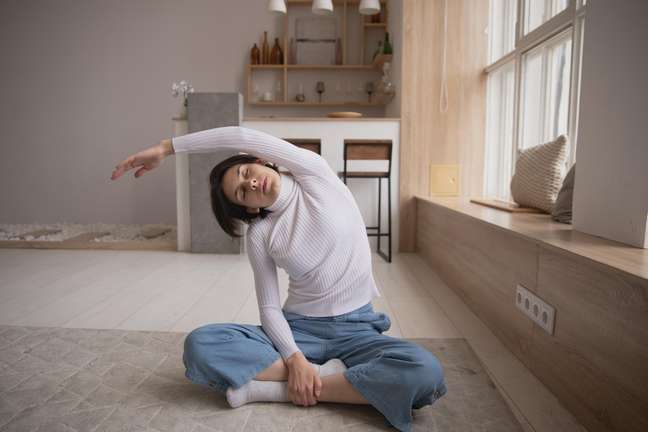Women with PCOS may have less motivation to exercise, but maintaining this health condition is essential.
Polycystic ovary syndrome is a condition that affects many aspects of a woman’s life. In addition to interfering with skin and hair health, it is very common that it affects these women’s workout routines.

You are right. Although male hormones, such as testosterone, are linked to an increase in mood, energy and even libido, it is quite common for women with PCOS to feel a large change in mood, even with the high of these hormones. in the body.
POLYCISTIC OVARY SYNDROME AND PHYSICAL ACTIVITY
According to Dr. Tasiane Alvarenga SBEM endocrinologist and metabologist, it is common for women with PCOS to be at increased risk for moderate to severe anxiety, symptoms of depression, and even eating disorders.
In addition, often, due to being overweight, they have difficulties in relation to their self-esteem and even self-confidence. Result? Exercise is at the bottom of your priority list.
“In this way there is only one place for the doctor, next to these patients, encouraging them in the search for a better lifestyle,” he explains.
PHYSICAL EXERCISES FOR WOMEN WITH PCOS
With this in mind, it is interesting to count on the help of a multidisciplinary team to best treat this health condition. And this can go through the evaluation of a physical education professional, who will set up a workout based on the needs of the body with PCOS.
“The regular practice of physical exercise in women with PCOS has shown positive results in body composition (loss of visceral fat, which is the bad fat, that fat that is in the abdominal region and reduction of the abdominal circumference), metabolic parameters (blood sugar , cholesterol, ‘hepatic fat’), cardiovascular and hormonal, as well as reproductive function (greater chance of ovulation and pregnancy) “, explains Dr. Tasiane.
Therefore, he explains that, in these cases, physical activity should not be a suggestion or guideline, but a prescription. Furthermore, it is worth remembering that the World Health Organization (WHO) recommends the practice of physical activity 150 minutes per week, and the ideal is to combine aerobic exercises, such as walking, cycling or dancing, with other physical exercises. resistance, such as weight training, pilates, or strength training.
“Muscle tissue is rich in insulin receptors. By helping the body with this regulation, physical activity stabilizes insulin levels and helps control weight, excess hair, hair loss and regulate menstrual cycles.” , explains.
+The best content in your email for free. Choose your favorite Earth Newsletter. Click here!
Source: Terra
Benjamin Smith is a fashion journalist and author at Gossipify, known for his coverage of the latest fashion trends and industry insights. He writes about clothing, shoes, accessories, and runway shows, providing in-depth analysis and unique perspectives. He’s respected for his ability to spot emerging designers and trends, and for providing practical fashion advice to readers.





